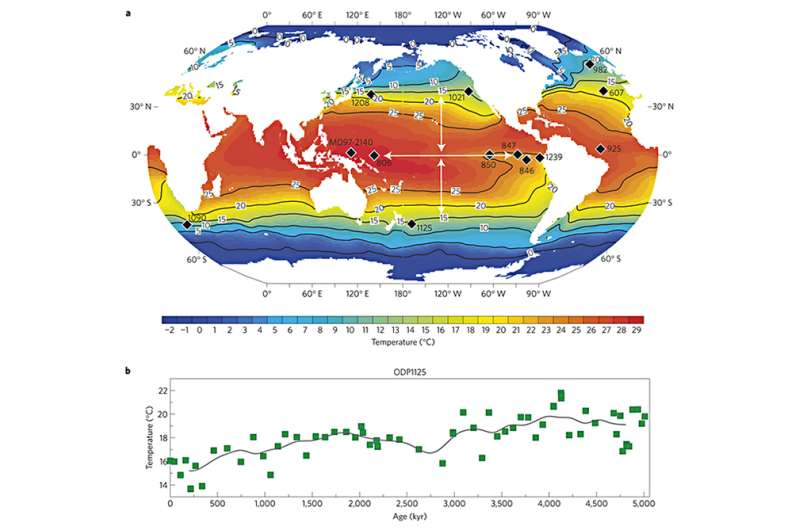Ocean temperatures of the past may tell us about global climate patterns of the future

Scientists are taking the temperature of ancient seas to discover how they've shaped global climate.
In a study published in the journal Nature Geoscience, a Yale-led research team explored differences in ocean temperatures over the last 5 million years. The team created a historical record for sea temperature gradients and compared it with state-of-the-art climate model simulations.
Sea temperature gradients (contrasts) in the tropics and subtropics are the engines of Earth's climate. They control global atmospheric circulations, as well as the transport of water vapor for the planet.
As part of the study, the researchers investigated climate evolution since the early Pliocene epoch, 4 to 5 million years ago. They looked at the development of gradients along the equator and mid-latitude regions to the north and south.
The early Pliocene was the last time atmospheric carbon dioxide concentrations were as high as today's levels, yet ocean temperatures during the Pliocene—from the subtropics to the Artic—were much warmer than today. The tropical Pacific, for example, had conditions resembling a modern El Niño that persisted for thousands of years.
"The puzzle is how to explain this warmth during the Pliocene," said lead author Alexey Fedorov, a professor of geology and geophysics at Yale. "Ocean temperature contrasts are a major part of this puzzle."
As part of their work, the researchers developed a temperature record for the mid-latitude South Pacific, where there had been no long-term temperature record. The new data shows that water temperatures during the Pliocene were about 5 degrees Celsius warmer than today.
"It has been argued that temperature contrasts were weaker during the Pliocene, implying a weaker atmospheric circulation," Fedorov said. "In our study, we confirm the reduced contrasts and show a tight link between ocean east-west (equatorial) and north-south (equator to mid-latitudes) temperature variations."
More information: Tightly linked zonal and meridional sea surface temperature gradients over the past five million years, DOI: 10.1038/ngeo2577
Journal information: Nature Geoscience
Provided by Yale University



















